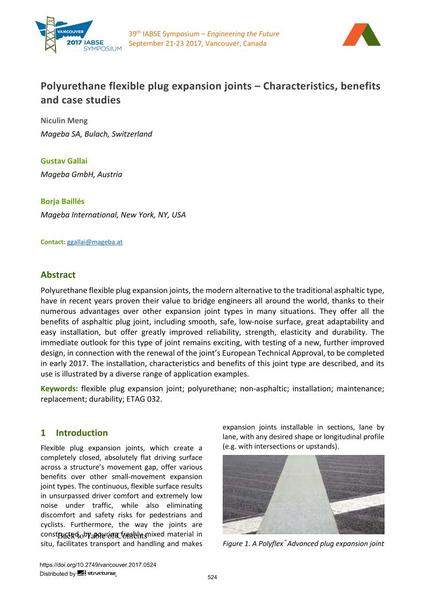Polyurethane flexible plug expansion joints – Characteristics, benefits and case studies

|
|
|||||||||||
Détails bibliographiques
| Auteur(s): |
Niculin Meng
(Mageba SA, Bulach, Switzerland)
Gustav Gallai (Mageba GmbH, Austria) Borja Baillés (Mageba International, New York, NY, USA) |
||||
|---|---|---|---|---|---|
| Médium: | papier de conférence | ||||
| Langue(s): | anglais | ||||
| Conférence: | IABSE Symposium: Engineering the Future, Vancouver, Canada, 21-23 September 2017 | ||||
| Publié dans: | IABSE Symposium Vancouver 2017 | ||||
|
|||||
| Page(s): | 524-531 | ||||
| Nombre total de pages (du PDF): | 8 | ||||
| Année: | 2017 | ||||
| DOI: | 10.2749/vancouver.2017.0524 | ||||
| Abstrait: |
Polyurethane flexible plug expansion joints, the modern alternative to the traditional asphaltic type, have in recent years proven their value to bridge engineers all around the world, thanks to their numerous advantages over other expansion joint types in many situations. They offer all the benefits of asphaltic plug joint, including smooth, safe, low-noise surface, great adaptability and easy installation, but offer greatly improved reliability, strength, elasticity and durability. The immediate outlook for this type of joint remains exciting, with testing of a new, further improved design, in connection with the renewal of the joint’s European Technical Approval, to be completed in early 2017. The installation, characteristics and benefits of this joint type are described, and its use is illustrated by a diverse range of application examples. |
||||
